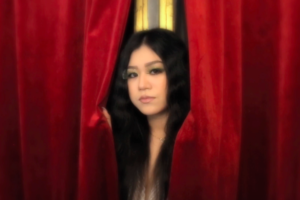The year 2020 is an achievement for the Metropolitan Museum of Art. The New York foundation will praise its 150th anniversary with a series of presentations, a significant number of which will put the focus on masterworks in its assortments, just as new acquisitions made as a major aspect of the 2020 Collections Initiative out of appreciation for the anniversary. With regards to the year’s topic, today the Met declared that the Costume Institute’s spring presentation will exhibit a century-and-a-portion of fashion history winnowed from its file and displayed along a “disruptive” course of events. “About Time: Fashion and Duration,” says Andrew Bolton, Wendy Yu Curator in Charge of the Costume Institute, takes a “nuanced and open-ended” approach. “It’s a reimagining of fashion history that’s fragmented, discontinuous, and heterogeneous.”
Bolton discovered motivation for the display in the 1992 Sally Potter film Orlando, which depended on the time-traveling Virginia Woolf tale of a similar name. “There’s a wonderful scene,” he says, “in which Tilda Swinton enters the maze in an 18th-century woman’s robe à la Francaise, and as she runs through it, her clothes change to mid-19th-century dress, and she reemerges in 1850s England. That’s where the original idea came from.”
Virginia Woolf goes about as the show’s “ghost narrator,” with cites from her time sensitive books including Orlando, Mrs. Dalloway, and To the Lighthouse showing up all through the display, much the same as how Susan Sontag’s statements guided watchers during this current time’s Camp: Notes on Fashion show. The philosopher Henri Bergson, whose idea of la durée—time that streams, collects, and is indissoluble—likewise gave a portion of the show’s structure. Furthermore, Michael Cunningham, whose novel The Hours, a postmodernist perusing of Mrs. Dalloway, won the 1999 Pulitzer Prize, will contribute a short story to the presentation’s list. “What I like about Woolf’s version of time is the idea of a continuum,” Bolton says. “There’s no beginning, middle, or end. It’s one big fat middle. I always felt the same about fashion. Fashion is the present.”
It’s human instinct to compartmentalize, to, as Bolton says, “look back at history with homogenous eyes.” Indeed, in a video cut appeared at Karl Lagerfeld’s dedication in June, Lagerfeld stated: “Clothes are the first thing you think of when you imagine an era—you think of pannier dresses when you say the 18th century, before architecture or anything else.” Bolton’s crucial About Time is to challenge and complicate this inclination, and to get us to ponder style history. To do as such, he will separate the 160 ladies’ pieces of clothing in the presentation into two areas or “timescales.” The first is a direct course of events of dark looks. “It’s a very rational, regulated chronology of fashion from 1870 to 2020, the timescale of modernity,” Bolton clarifies. The subsequent gathering presents what the guardian depicts as counter-chronologies, generally in white troupes, however there is additionally liable to be eruptions of shading in places. “You can see them as folds in time,” he says.
In an official statement, Max Hollein, director of the Met, expounded on the idea: “This exhibition will consider the ephemeral nature of fashion, employing flashbacks and fast-forwards to reveal how it can be both linear and cyclical.” Bolton will feature an assortment of “folds in time.” They could incorporate comparisons between two architects of various periods, as Alaïa and Vionnet or Poiret and Galliano. “Or it might be juxtapositions between two designers from a certain period who were competitive, and one survived and one didn’t,” prefer “Chanel and Patou in the ’20s and Rei Kawakubo and Georgina Godley in the ’80s.”
It’s helpful to think about these “counter-chronologies” or “folds” as associations. Bolton makes them crosswise over shape, theme, material, example, procedure, and decoration. Among his top picks: the connection between a black silk faille princess-line dress from the late 1870s and an Alexander McQueen “bumster” skirt from 1995. “Over the years, McQueen continually worked with this elongated silhouette—the princess line basically—and I’ve always felt that the bumster was the most radical version of the way he achieved it.” He proceeds: “What the dual timelines try to unravel is that tension in fashion between change and endurance, and transience and permanence. Ultimately, I think it advocates for a slowing down of fashion.”
The presentation, which will be introduced in the Met Fifth Avenue’s Iris and B. Gerald Cantor Exhibition Hall, will be made conceivable by Louis Vuitton. Bolton is working with Es Devlin, the visual craftsman and stage creator, on the display design. “I’ve long admired her work and wanted to collaborate with her,” he says. “This theme seemed most suitable for her, she’s done several of what she calls mirror mazes and she often refers to the complexity of time with her design process.” The cochairs for the gala on Monday, May 4, will be Nicolas Ghesquière, Lin-Manuel Miranda, Meryl Streep, Emma Stone, and Anna Wintour.
About Time: Fashion and Duration will be on see at the Costume Institute from May 7 through September 7, 2020.
Richie Molaro is one of the most prominent English writers. He is assisted with corporate content marketing and utilizing correctly newsletter. A Bachelor’s degree in marketing and a minimum of 10 years of professional experience in Content creation.




Add Comment